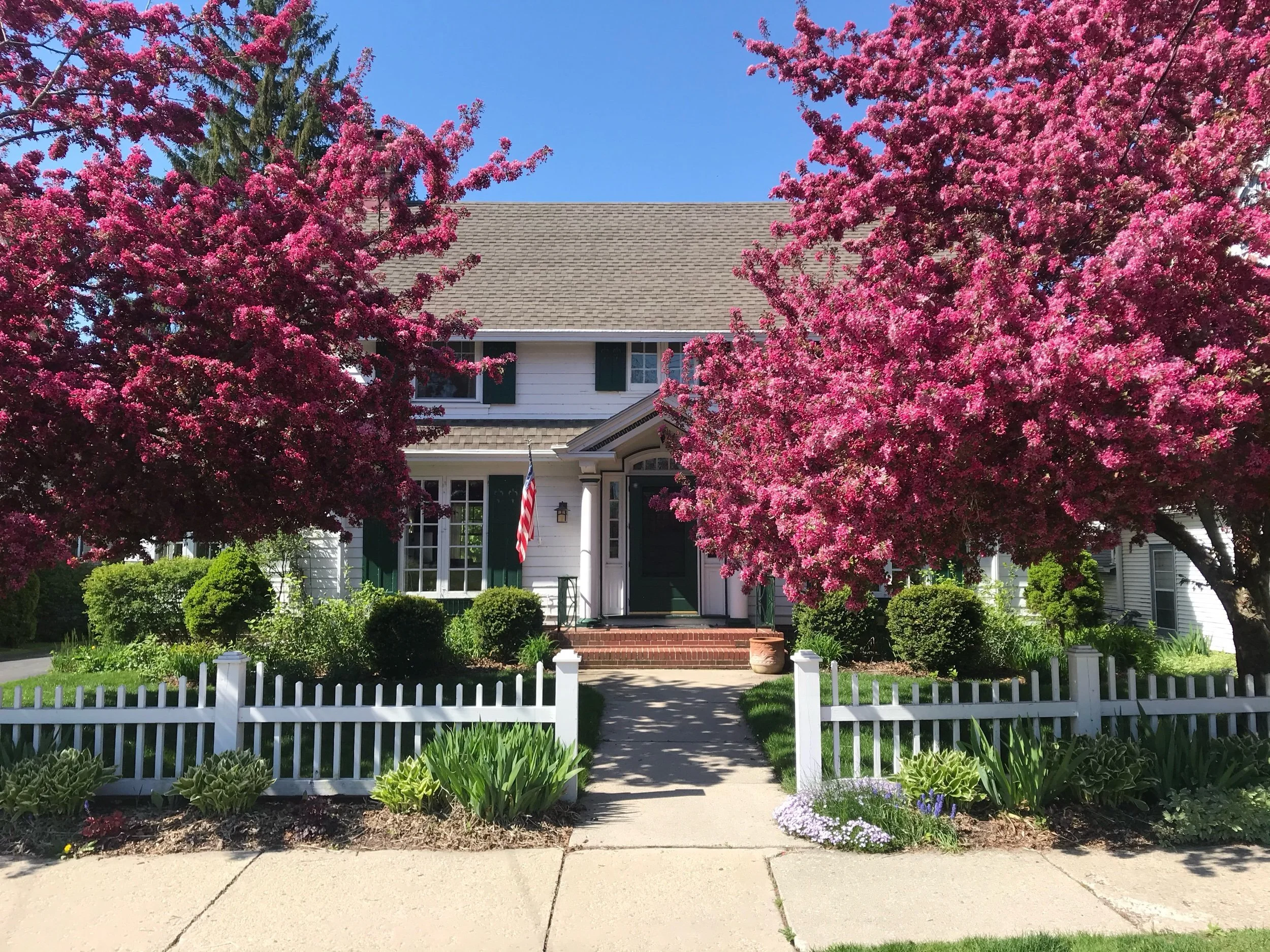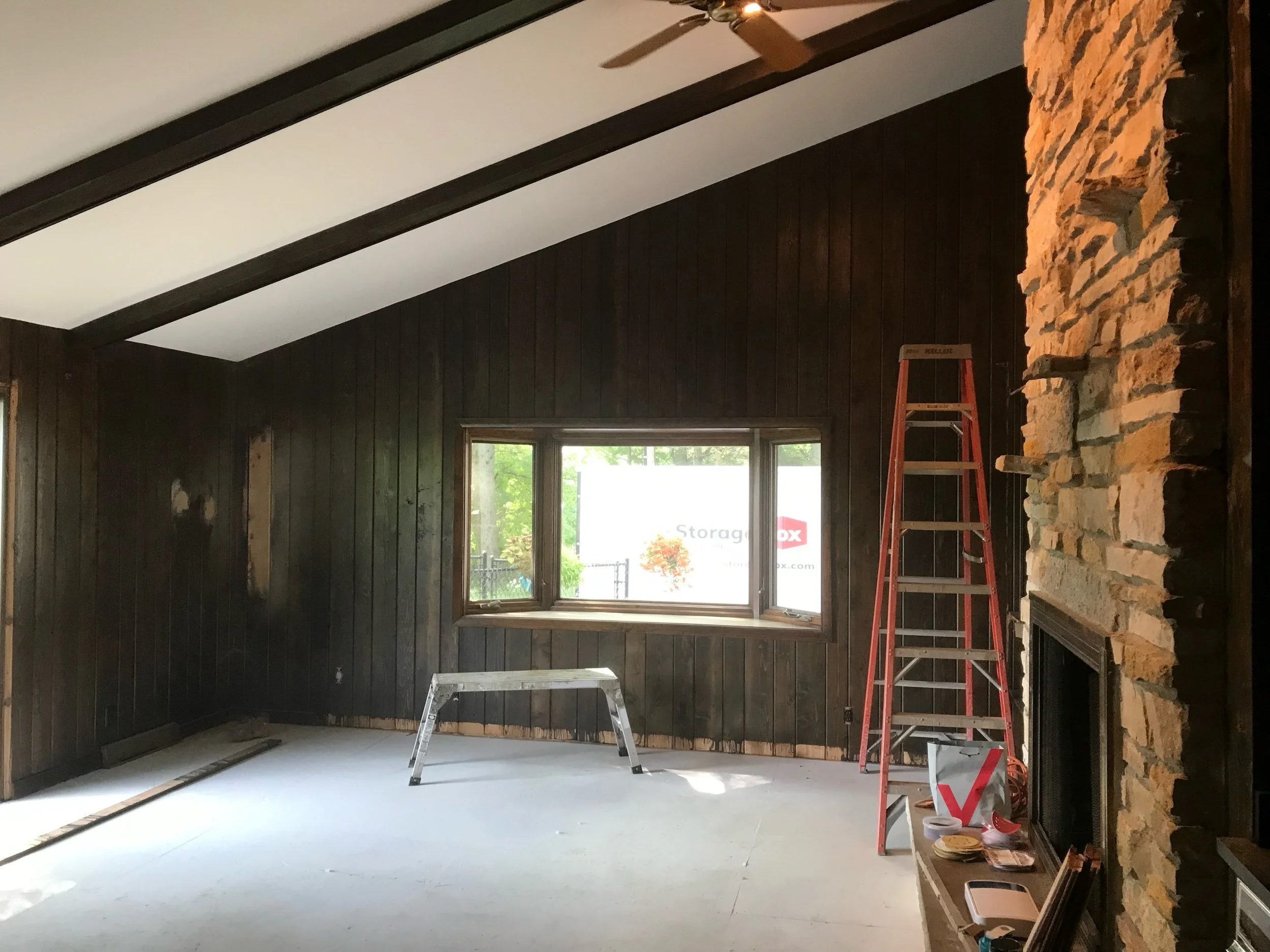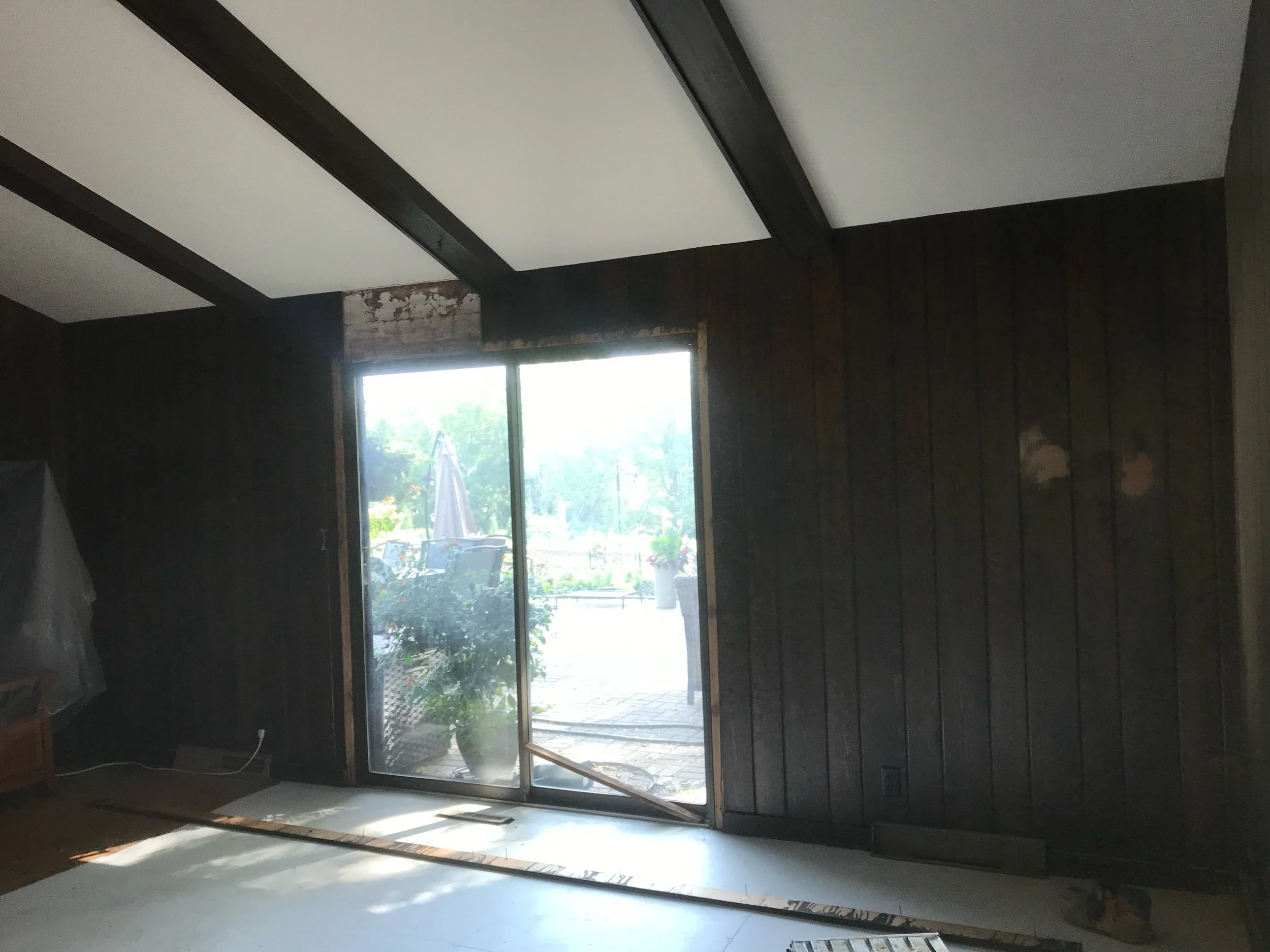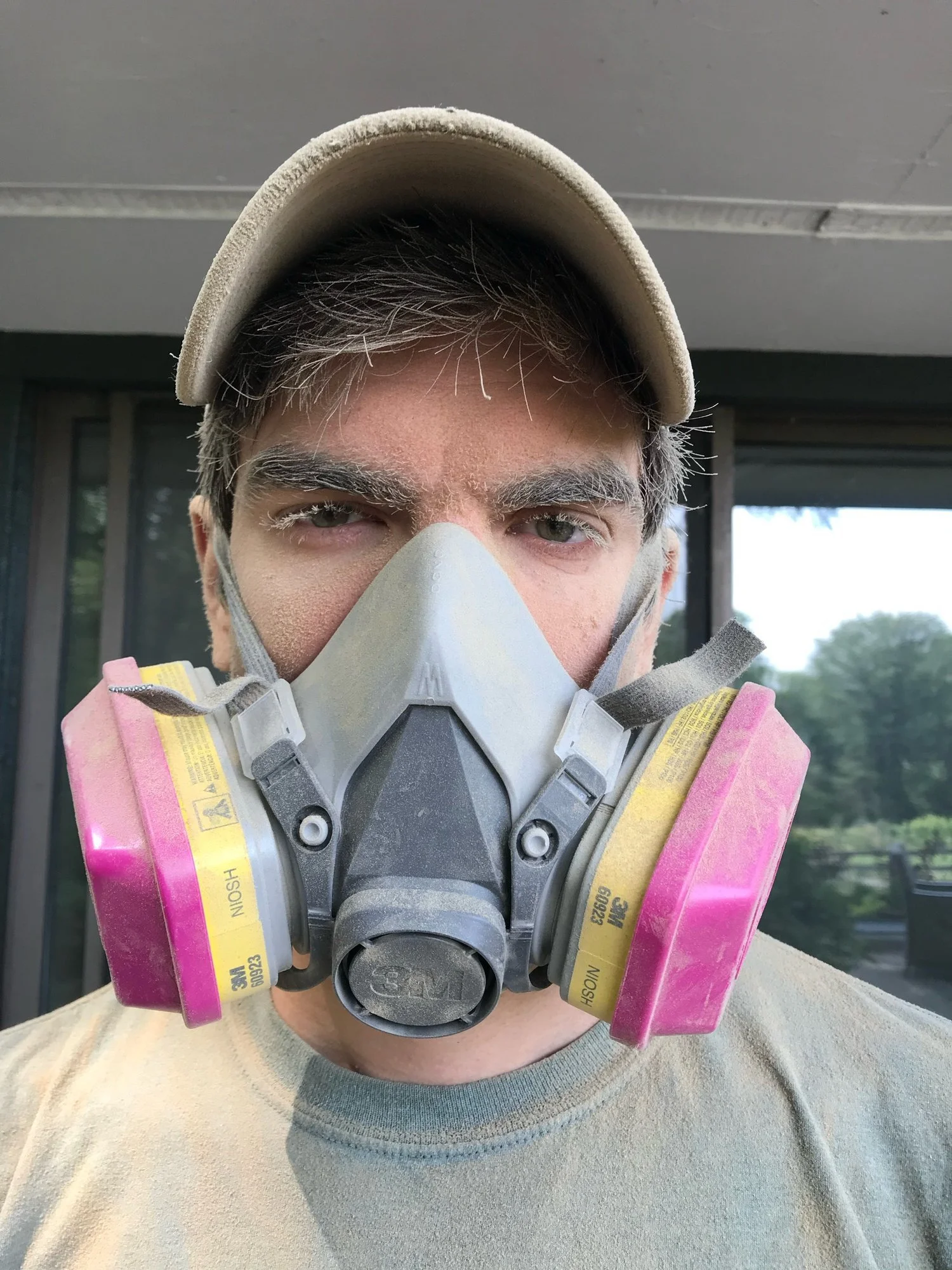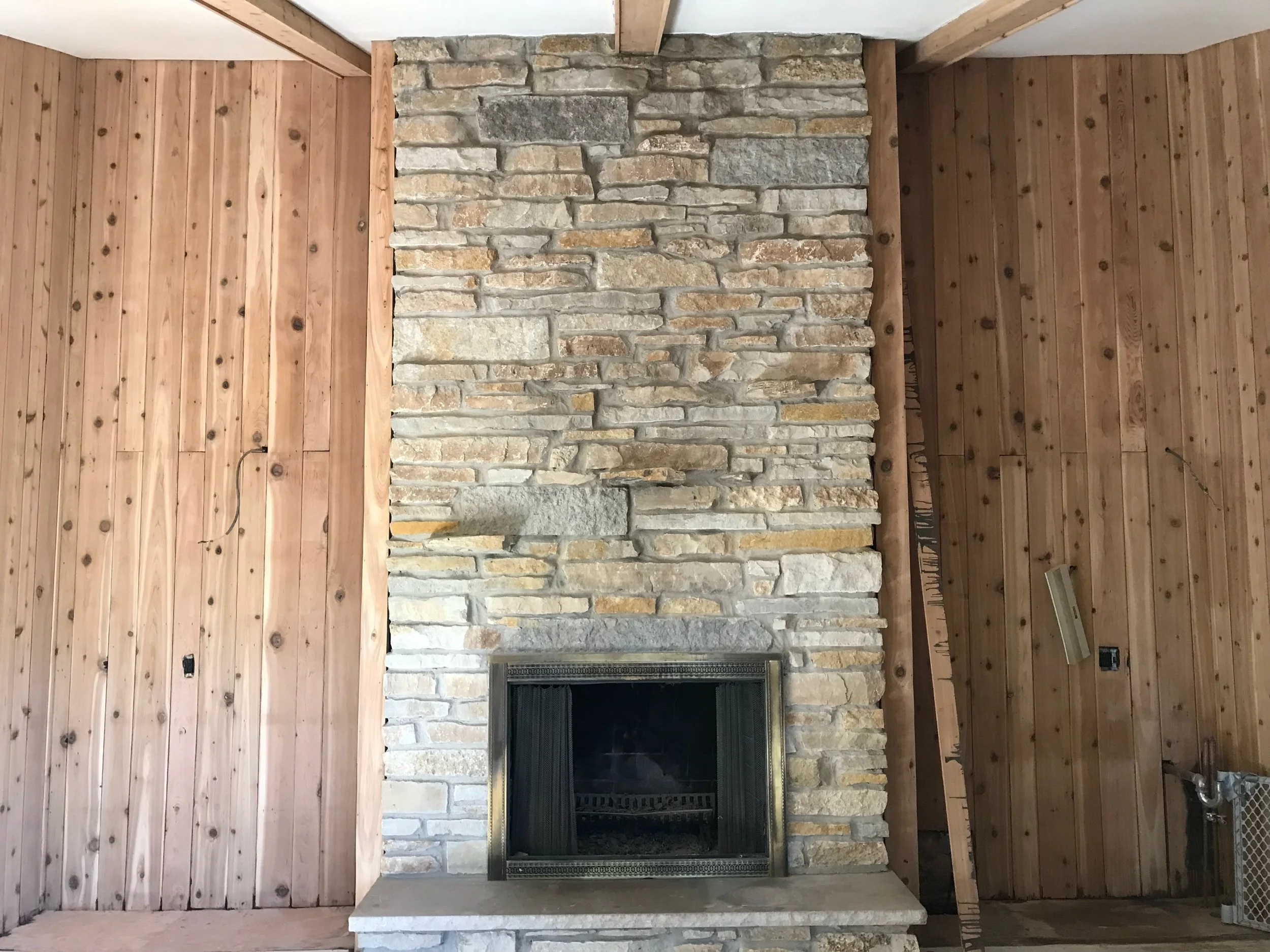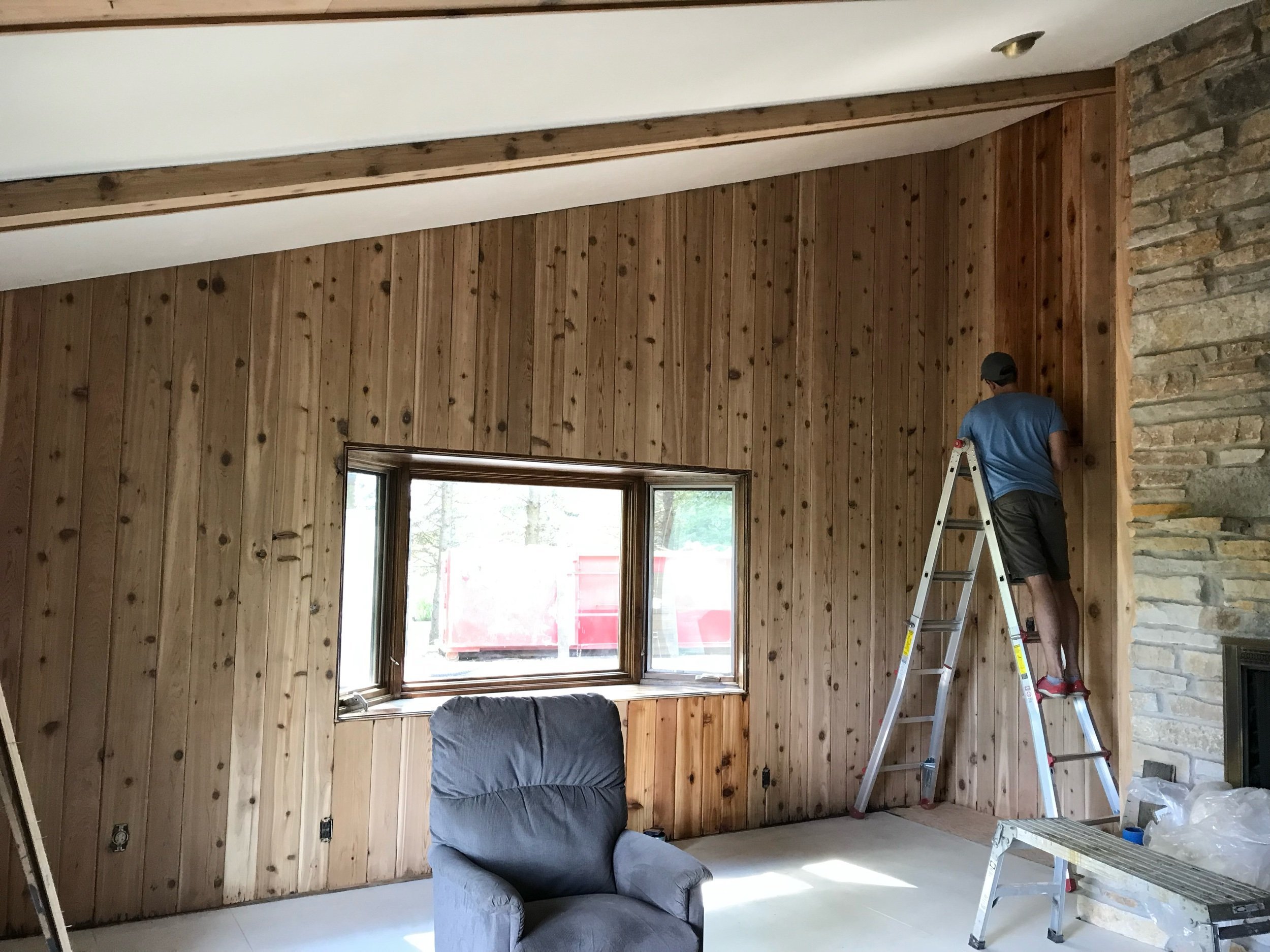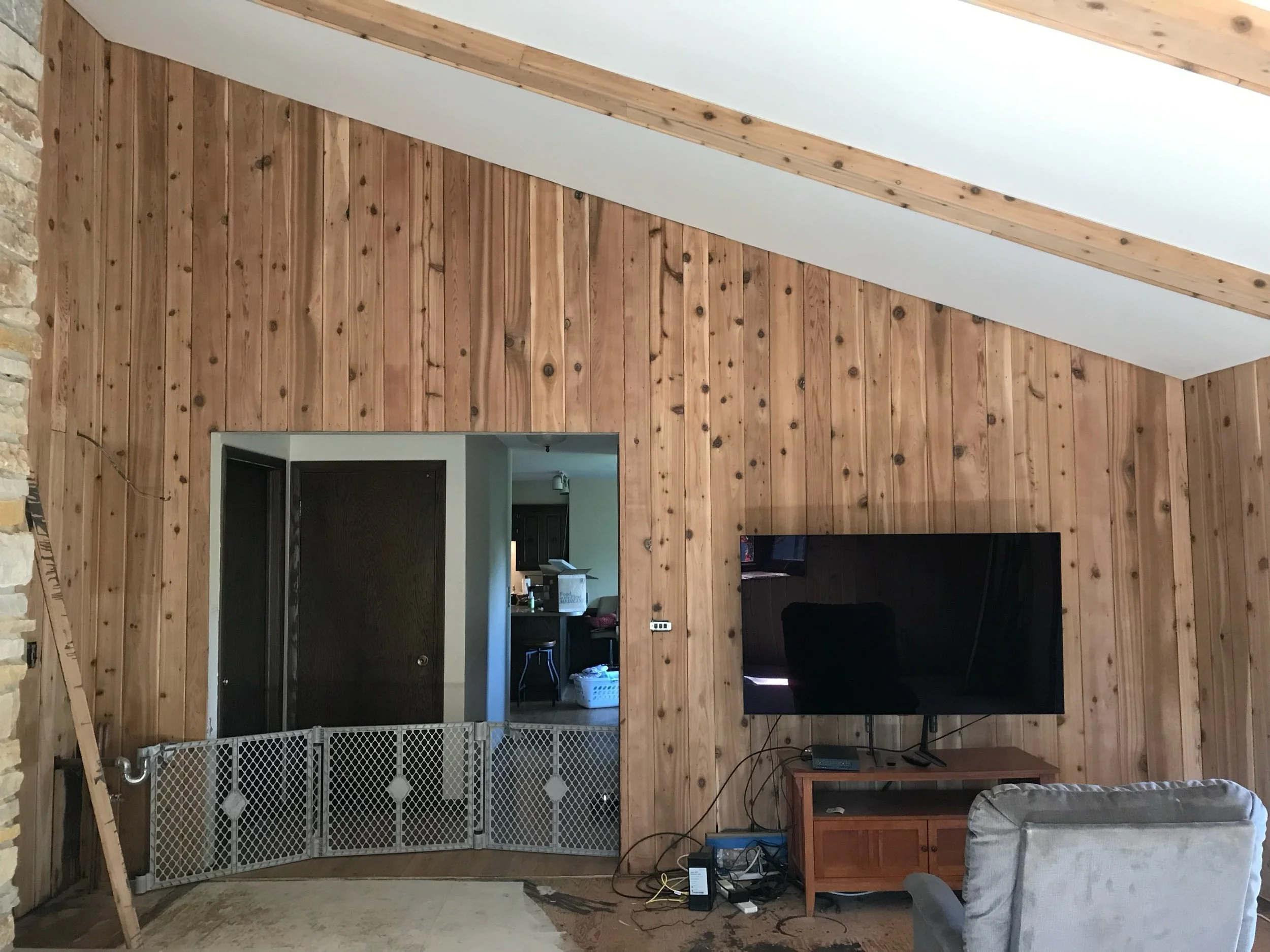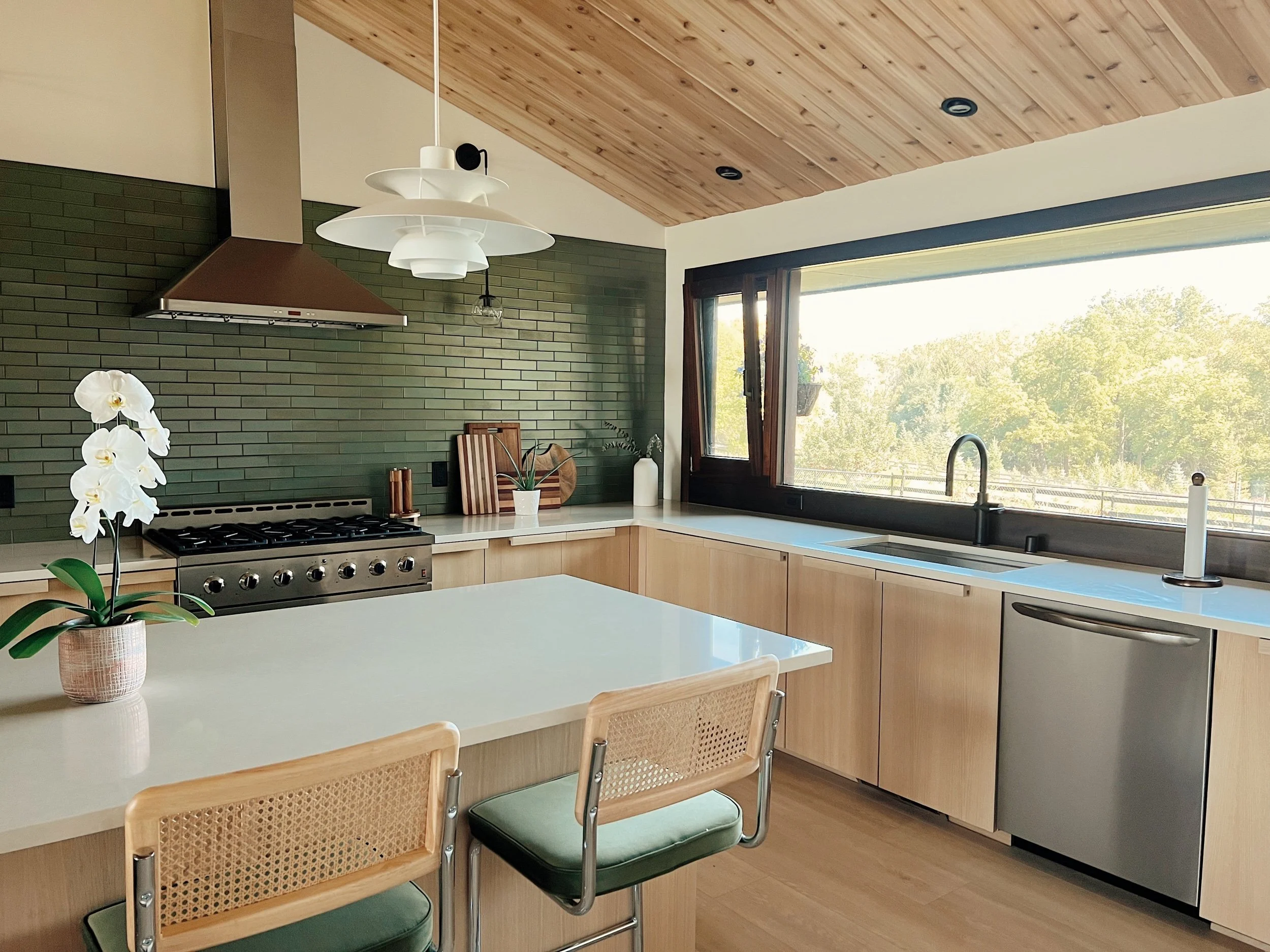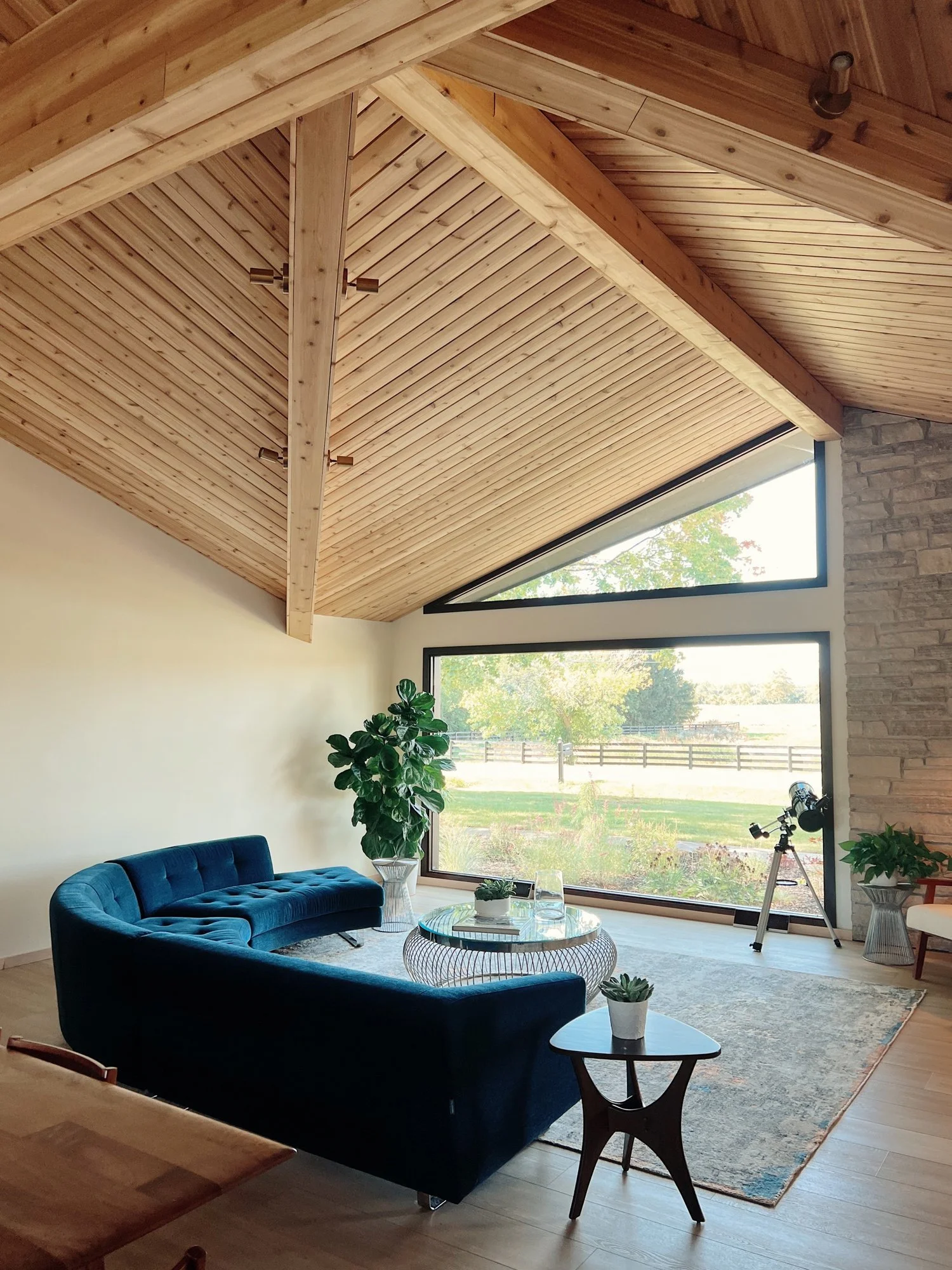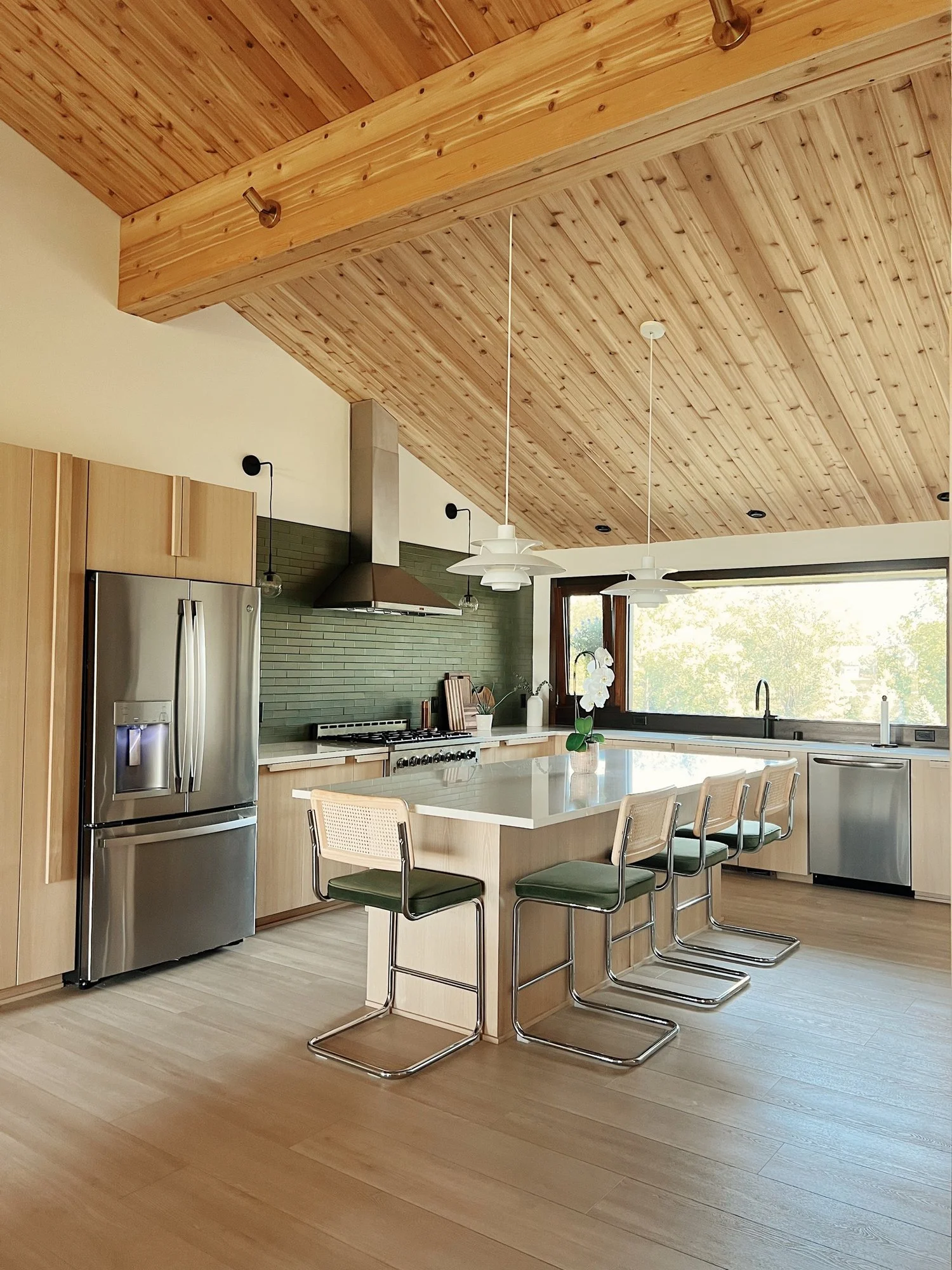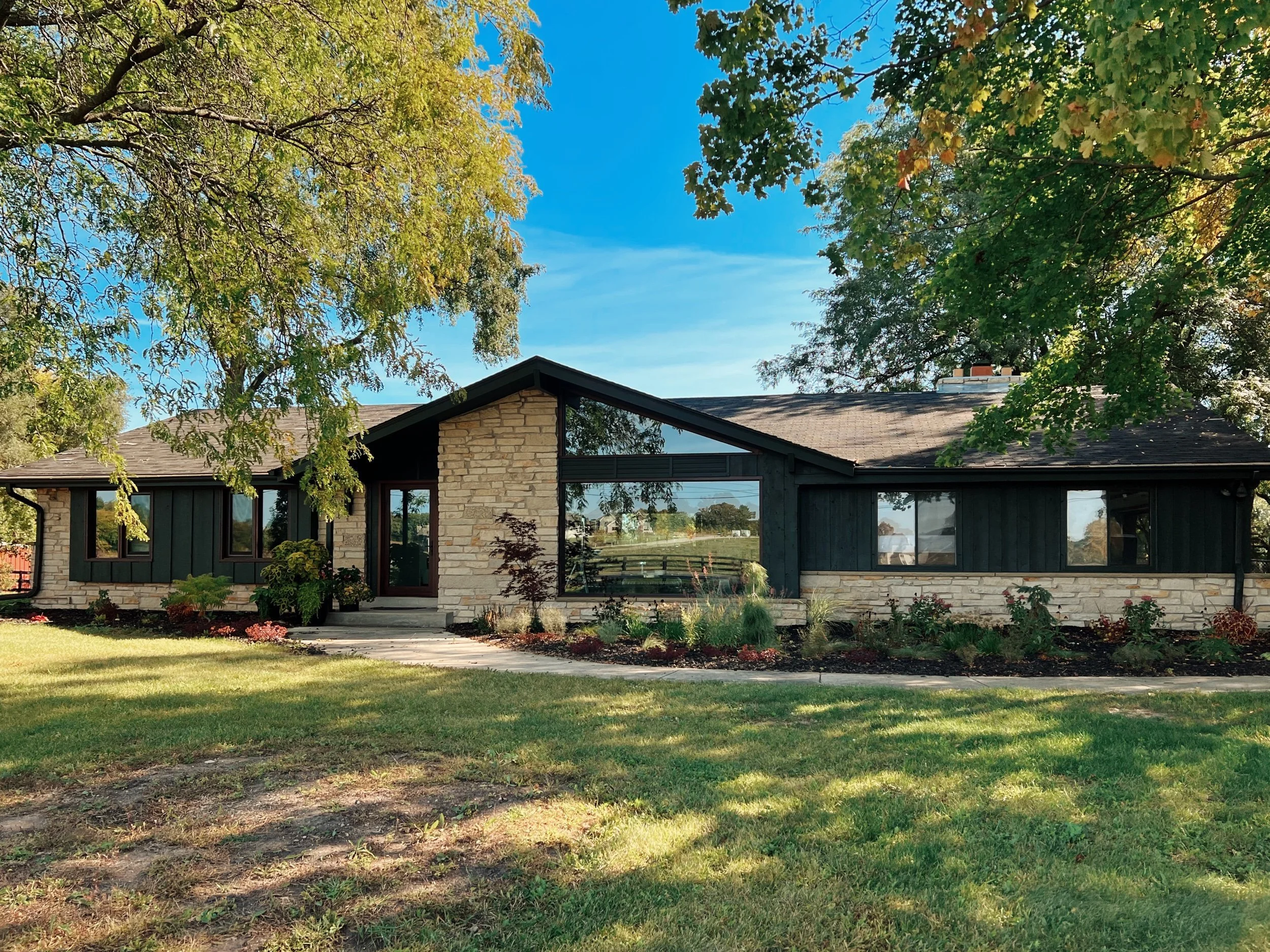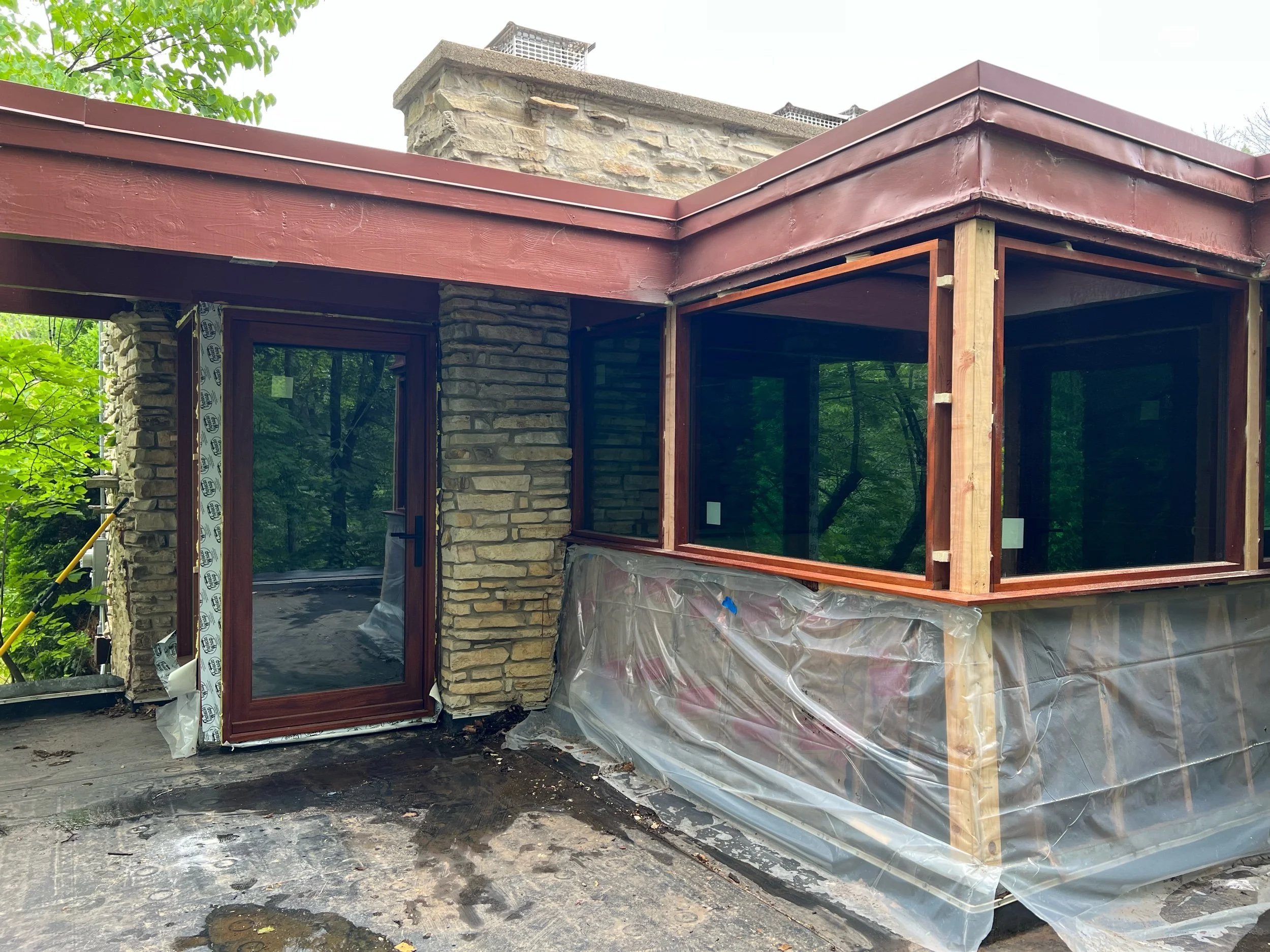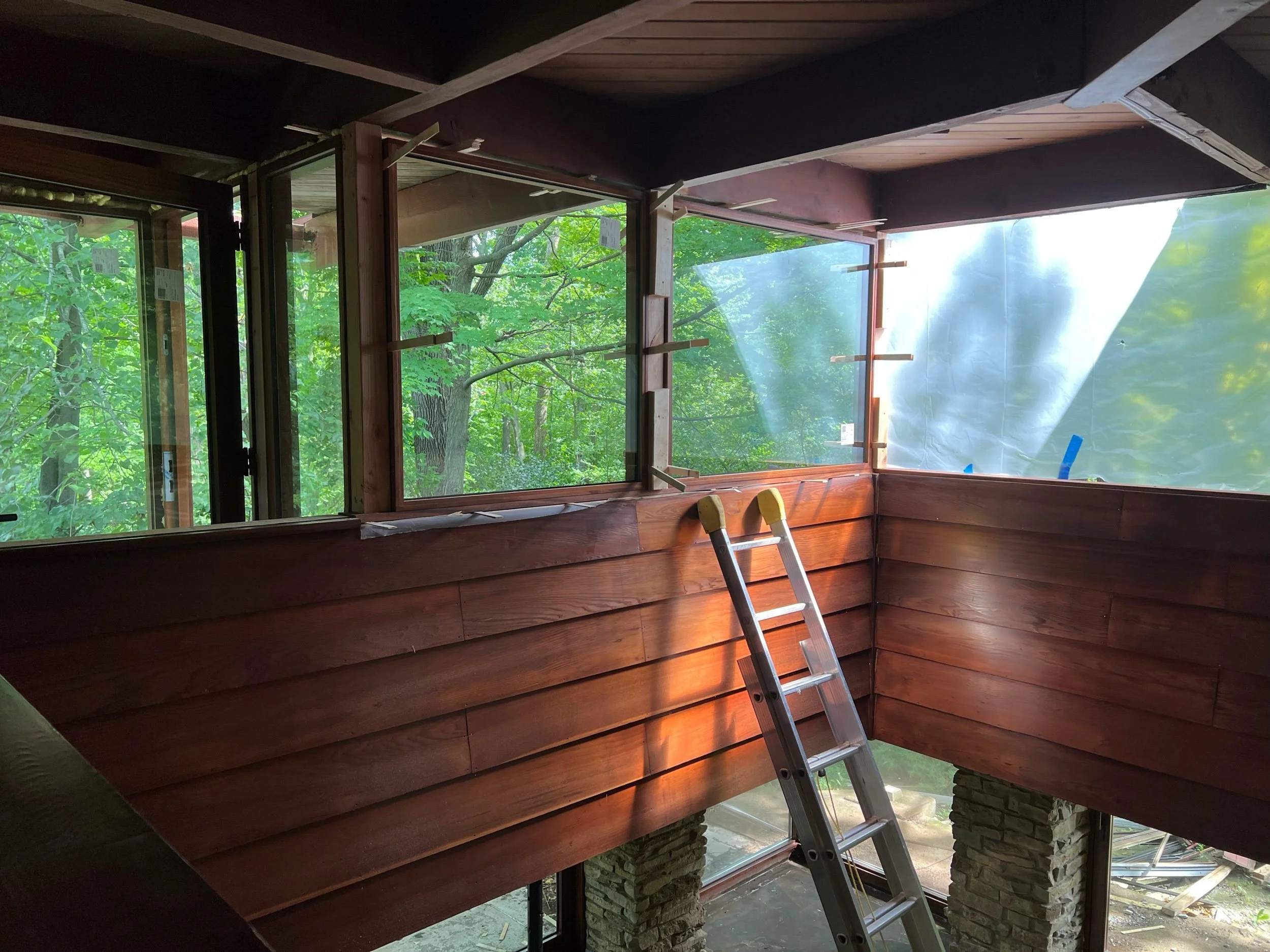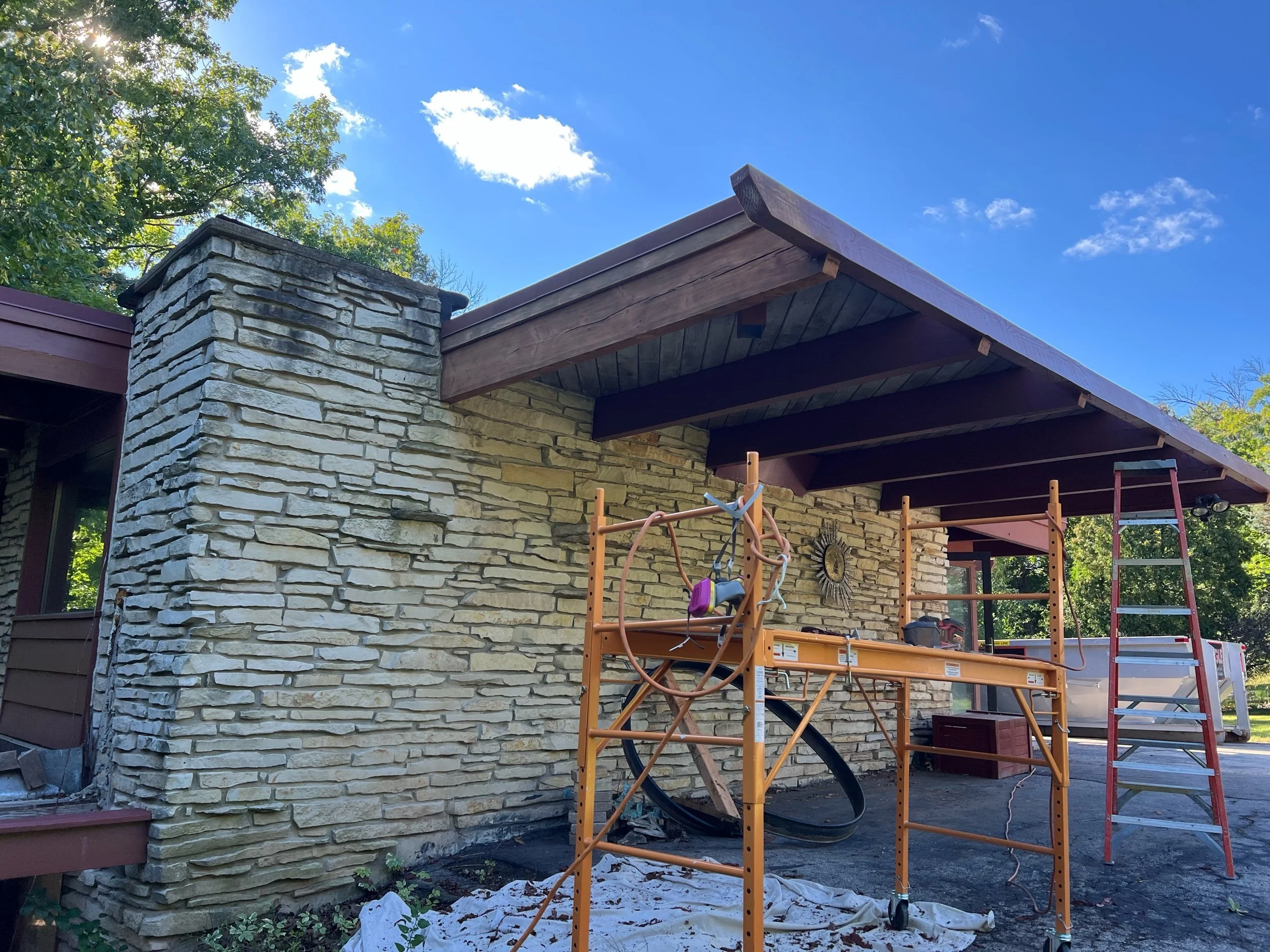how we got from there to here (a small novel)
As many of you may know, Dan and I started our journey in home design and remodeling in a very different realm than where we are now. I grew up in a house designed by a contemporary of Frank Lloyd Wright (John Randal McDonald, often referred to as poor man’s Frank Lloyd Wright) and the backdrop of my childhood and adolescence was stone, glass, wood, and concrete. My dad, heavily influenced by the architects mentioned, spent the majority of two decades rehabbing the home I grew up in after purchasing the home, then in foreclosure, which had been spray painted white from head to toe. My sisters and I grew up watching the rehabilitation process firsthand. We grew up in a work of art.
It wasn’t hard to “get into” mid-century/organic architecture after growing up so heavily immersed in it. If you’ve ever been in an organic mid-century home you know it’s hard to not feel connected to the landscape, with sweeping panoramic views encapsulated by stacked stone or panels of mahogany . I have my childhood, my dad, and this house to thank as the foundation for my love of houses that erase separation between human and land.
range line. demolished in 2017.
Dan and I got married in August of 2015. I was barely 20 years old and Dan was only 24! After spending several years wandering through life and individually trying to find our niche, Dan found himself in the realm of house flipping for an investor. The amount of hair pulling that occurred during this time! You can image with my background the sheer frustration watching decisions being made to do the cheapest thing possible and whitewashing over any and all character. After several years, Dan eventually had enough experience (and enough people asking him for help) that in 2019 we decided to start our own business. Heck, we were going to do it right! Stop all of this consumer driven trendy remodeling and help people find the magic that exists when you choose timeless design rooted in materials that hold aesthetic longevity. range line design was born.
Well, COVID happens and new businesses don’t have the luxury of being picky, so we spent the majority of the first two years taking any project and every project that came our way. We learned so. much. I couldn’t - and I kid you not - even use a drill to put a screw into drywall when we started. I don’t think I’m exaggerating when I say that I didn’t know anything. We did kitchen remodels and bathroom remodels and finishing basements and she sheds and adding closets and worked for amazing clients that became family and challenging clients that caused lots of stress and tears. We learned how to befriend plumbers (cake) and electricians (cake) and how to smooth bumps over when miscommunication had gotten the better of a situation (also, cake). I learned how freaking hard carpentry is and how mercilessly cruel and thankless people can be. When the expectation of a project is always perfection there is no room for any error and often no appreciation for everything that goes into a project just so it looks good. I think the biggest problem with the vast majority of people losing the ability to be handy is the understanding of how much work can go into what appears to be even the simplest of tasks.
About two years into business we bought our first home. A very charming 1925 Dutch Colonial nestled in the heart of Cedarburg, WI. We affectionately called it Mr. & Mrs. Claus’s summer home as the kitchen was every combination of red and green you could think of and genuinely looked like a cute elderly couple with a deep appreciation of Christmas had lived here. While this house was by no means “the dream home,” we figured we would make the most of it and could fix it up enough until we could buy our mid-century modern (MCM) gem. Around the same time our business had picked up to the point that we were actually (!) getting clients with MCM homes! Little did we know that this was the beginning of a grand adventure.
We took on our biggest project to date starting in the summer of 2021. The task: update an entire 1970s time capsule ranch, complete with shag carpeting, velvet wallpaper, and more! We had initially started by thinking we were going to take the house in a slightly atomic MCM direction to make sure the house kept a little bit of its funky origins. However, before we started making any decisions we decided to tackle the great room. It was clad with cedar stained the darkest brown imaginable. Even with a 6’ sliding door and giant 5’ bay window the room was a dark cave. The homeowners couldn’t decide how to lighten the room and Dan and I (being young and environmentally minded and as most would say, dumb) decided to sand the entire room. We spend a full week in respirators with orbital sanders getting the cedar back to its raw state. The room was stunning and proved to be the keystone design element that we carried through the rest of the house.
As we were continuing the design and work on this gigantic project, we also were addressing fixing up our cute old house. We took one look at new windows and were astounded by how much you would end up paying for glorified plastic to replace the original wavy glass. I figured there must be another way out there and I was determined to figure it out. Little did I know that my obstinate, stubborn, thrifty nature would unlock a portal into a completely different existence.
About seven months and three giant roll off dumpsters (or was it four?) into our total house remodel project, Dan was starting to have an internal crisis. I would go looking for him and find him outside, wood in hand, standing in front of a dumpster, struggling to throw out a single two by four. The sheer quantity of building materials and stuff that was thrown out on a daily basis was gnawing at his conscious. I dealt with the guilt by trying to save anything we could from the project in an effort to reduce the sheer amount of waste. We saved all the ceiling joists from vaulting the main living room and kitchen, old light fixtures, vintage tiles, toilets, (by the way, this is all still sitting in our garage as of 2023) literally as much as we could to calm the part of our brain that was freaking out about the implications of the industry we were in. It’s easy to write off the dumpsters when it’s your own project, because it’s ‘just’ this house and that’s ‘it.’ But for us, we see the dark side of it all. Our business alone was responsible for ELEVEN overflowing dumpsters in 2022. And that’s just us. A two person, husband and wife, do it all company. Now extrapolate that to everyone doing home remodeling and fixing up their homes. Now think about how everyone is redoing and updating their homes in the age of disposable plastic and how long things last these days. This is an epidemic of waste.
Our design philosophy, even in the era of range line design, was to create homes built with quality materials and designed in a way that would last decades. We are, and I can’t emphasize this enough, as anti-HGTV as it gets. (HGTV, if you’re reading this, we would heavily encourage a sustainable based TV show and then maybe we could reconsider our stance. Update: We do love the folks from Cheap Old Houses and are really glad they are getting their passion and cause represented!) The best thing about our total remodel house project was the design we chose. Everything was timeless, heavily influenced by Scandinavian elements of raw cedar and light, airy spaces. We designed a space we think is going to age beautifully and will require very few - if any - dumpsters in the next several decades.
In conjunction with our life crisis, I was busy Googling away after hours as I had unearthed an entirely new realm of building. Looking into repairing our 100 year old windows had proved successful on many different fronts - not only did I learn that you can repair your old windows, but that properly repaired windows are just as efficient and can easily last another hundred years! Even more shocking, because most heat loss comes from poorly insulated walls and roofing, it can take over 100 years for the new windows to pay for themselves in energy savings! Not to mention, most new windows will not last more than 25 years. It’s all just unbelievably shocking!
In the process of figuring out how to re-glaze and repair our historic windows, I also fell into the world of traditional historic paints, namely linseed oil paints. Folks, this stuff is life changing and I cannot emphasize that enough. Shout out to Natalie at Earth + Flax who opened my eyes to all of this! (I have too much to say about this and will get on that soapbox another day.) Ultimately, digging into the historical way of how things were done almost always demonstrated that not only was the old way of doing things greener for the planet, healthier for the humans, but also better for the building materials and the longevity of the building as a whole.
Back at work, we had finished our giant house remodel and had moved onto the repair and restoration of a MCM house by the same architect as the one who had designed my childhood home. This poor house, it had been so neglected for decades and was in desperate need of TLC. One of our particular challenges was that the house, a peculiar two story square building, had nominal 4x12 fir beams extending beyond the roof overhang and many were badly rotted and in needed to be repaired. Well, we were at a bit of a loss as to how to re-splice in the beams in a way that would prevent rot and last as long as possible. However, while I had been busy learning about windows and linseed paints, Dan had been learning more about sustainable forestry practices and timber framing, checking out stacks and stacks of books from the library. When it was time to address the beams, he was confident that there would have been some timber framing joint that could accomplish the task, but wasn’t quite sure. “Let’s make a post on Reddit! Maybe someone will have an idea,” he said! Little did we know what would happen next…
In the fall, we had started talking with new clients who were looking to do an addition on their 1880s farmhouse. They floated the idea of a true field stone addition like you see on other buildings from the 1800s, but quickly dismissed their idea as too crazy and out of touch with reality. Little did they know that, 1. we are crazy, and 2. I had been dying to learn how to build traditional stone houses. It was the perfect match! What we didn’t realize was that it would be impossible to find a mason that can even do this work anymore. Much like all the historic arts and trades, the knowledge is dying out.
Over the next several months, we managed to secure one commercial timber framing/stone building project and the stone kitchen addition for 2023. [This is a very long story, but ultimately we thought we were going to be mentored, got completely catfished by a total fraud, and ended up being entirely self taught (because let’s be real guys, do NOT trust strangers you meet on the internet. Please learn from our mistakes!) which has been a whole adventure worth its own post!]
By now, we’ve spent hundreds of hours discussing building materials and methods and the problems and drawbacks to modern everything. We’ve lamented poor design and the culture of consumerism and the toll it takes on every industry, harming our health and the planet along the way. We bought a sawmill! We’ve been reading books on making our own historic windows and doors, and stacking stone, and how to use green wood. We’re watching videos on how to build our own furniture, so that what we build now can be the future generation’s antiques. We’re learning how to fix buildings that are hundreds of years old and how to build buildings that will be hundreds of years old. Our hearts have never felt so full and excited and fulfilled. We have to pinch ourselves because it feels like this life can’t possibly be this magical.
The deeper we wandered into the world of old building, the more we fell in love with our old house. The built ins! The wavy glass! The plaster! The antique brass! The old wallpaper! Our “transitional starter house” slowly morphed into our dream home.
We believe the future of building is going back to the past. We are thrilled to be here and look forward to sharing everything we’ve learned and are learning along the way. We hope we can inspire and be a resource for the next generation to get back to the trades, embracing the artistry and craftsmanship that exists right there in all of our blood.
d+r




